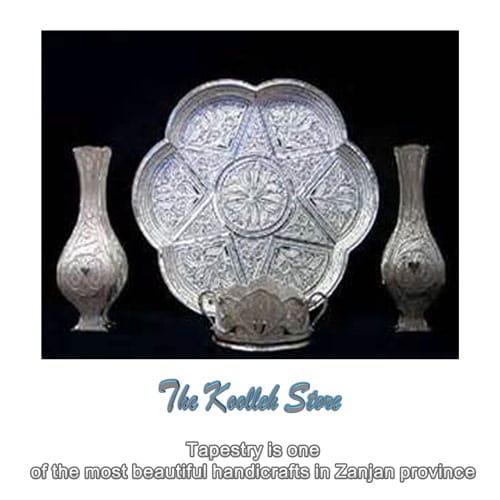Tapestry is one of the most beautiful handicrafts in Zanjan province

Tapestry has always been considered as one of the most original handicrafts in Zanjan province.
Tapestry is a subtle concept of silver work that is made using fine silver wires and ribbons and the use of Islamic and regular designs. ., is.
History of Zanjan’s national work:
This art is flourishing in the city of Zanjan. The history of tapestry in Zanjan up to the tenth century AH is clear and distinct, as Frederichard, a European Orientalist, writes in his travelogue: It’s electricity.
Samuel Greenwill Benjamin, who traveled to Iran around 1883, also provides more information on handicrafts and industry in Zanjan.
Zanjan, as the original origin of tapestry art with thousands of years of service and historical background, still maintains its name among the best of this handicraft art and strives to restore its previous position.
The work that was common in this city only in the first millennium AH as the native handicraft of Zanjan was common during the reign of Reza Khan with the migration of a number of artists from this city to Tehran and Isfahan in other parts of the country.
Tea and syrup service, jewelry box and knife handle are the main handicrafts of Zanjani artists in the following years, which are gradually being added to all kinds of these beautiful handicrafts, including jewelry.
The flourishing of this art and craft began in the Seljuk period and reached its peak during the Safavid period. The cities of Zanjan and Isfahan have trained most of the artists in this profession and delivered them to the field of traditional arts.
During the Qajar period, the city of Zanjan was one of the most prestigious cities in the country.
Current situation of national art in Zanjan:
This art is indebted to artists who have created valuable works with very basic tools, including Zanjan tapestry artists: the late Karbalaei Hossein Ali, the late Mashhadi Rahman, the late Musa Kazemian Moghadam, the late Haj Samad Hammami, and artists such as Rahim Borjkhani, Haj Abolfaval. Sabouti and Haj Ghorban Ali paid and ….
The old traces of tapestry in Zanjan have been completely destroyed or silver has been melted for reuse. Unfortunately, due to the lack of a museum in Zanjan, the old silver-tapestry works have not been preserved.
Minor roles of Zanjan national media:
The common motifs in Zanjan Manila, like other handicrafts, are mostly mental and inspired by nature and traditional designs. Attention to original and various designs and patterns and its great elegance in general have a high quality compared to Isfahan tapestry and has a special place among the prominent fields of Iranian handicrafts.

